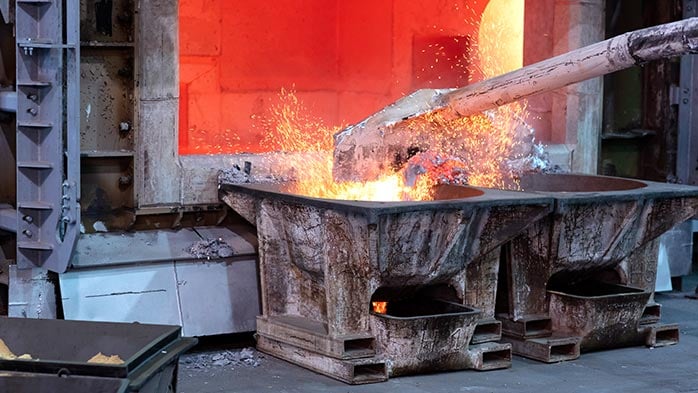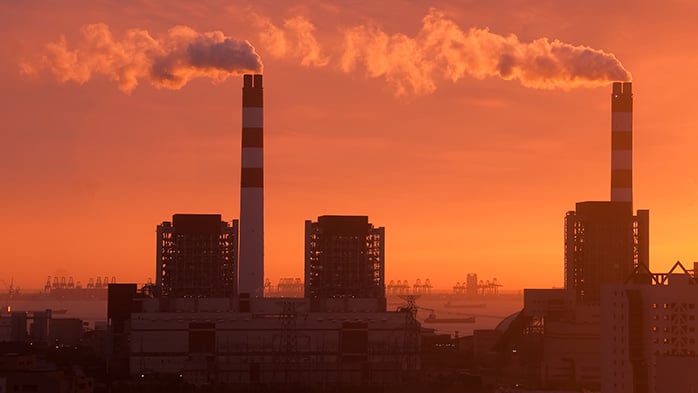CRU’s Sarah Macnaughton and Eoin Dinsmore participated as panellists at the FT Commodities Summit in Lausanne from 21-23 March. Sarah presented on the Asia energy transition and Eoin spoke about green premiums in aluminium and base metals. Please get in touch with Sarah or Eoin if you would like to follow up on any of the points discussed in this piece.
The CEOs of the world’s largest commodities traders were interviewed at the event and a few themes emerged, which were echoed in conversations we had with Summit attendees. Many related to market structure and the direct and indirect impact of the War in Ukraine and sanctions against Russia:
- Margin calls: Initial margin requirements on certain contracts have increased to around 75% of the underlying commodity in certain markets. This means an enormous increase in working capital requirements and is putting major strain on commodity producers, traders and consumers who are trying to manage risk in supply chains. For zinc and aluminium, this is important, as gas traders are reluctant to build inventories ahead of next winter as the cost to hedge the gas is too high. Low gas inventories at the start of winter 2022/23 in Europe, could lead to extreme gas and power price volatility.
- Market fragility: This links to the high margin calls, as markets become more expensive to trade, the open interest has fallen. Lower open interest can lead to higher volatility and higher volatility leads to even higher margin calls. This cycle could quickly spiral if traders are forced to hastily unwind positions, which may happen as sanctions are expanded.
- Oil: The oil panellists were extremely bullish – the highs for 2022 were pegged at $150-225 /bbl and there were real concerns over supply availability.
- Diesel: Russia accounts for approximately half of European diesel imports and disruption to this flow has led to large increases in diesel prices. Participants at the conference believed Europe will pay a premium and secure its diesel requirements. However, there could be real shortages in places like South America and Africa.
- Voluntary carbon market: There were numerous panels and conference discussions on the rising importance of the voluntary carbon market. One notable comment from the CEO of Trafigura was that the carbon market (compliance and voluntary) will at some point in the future rival the oil market in size. For metals and mining companies, many are now investigating where they can possibly utilise the high-quality voluntary carbon offsets market.
Green Premiums: A market poised for growth
At the Summit, Eoin Dinsmore joined a panel on Green Premiums in Commodities. We have done our best to reproduce CRU’s contribution to the panel below.
Financial Times: What are we seeing in the markets already in terms of green premia?
CRU: We can identify four categories of green premiums:
- Market access: Certain commodity certifications which cover a broad remit of ESG factors (Copper Mark, Aluminium Stewardship Initiative, Responsible Steel) are becoming a requirement if companies want to sell to particular customer groups.
- Low-carbon: When the market talks about green premiums, typically we are speaking about low-carbon premiums. Small premiums have been reported to CRU for low-carbon aluminium of around $20 /t. But that should be viewed in the context of a delivered aluminium price of $4,000-5,000 /t today in Europe.
- Green step change: The pricing of certain commodities or products have shifted due to green credentials; some are sustainable, and others are less sustainable. i) Copper scrap; if we compare the copper scrap price today to the last time LME copper traded above $10,000 /t in 2011, number 2 copper scrap in Europe was trading at a discount of over $800 /t, today that discount is around $300 /t. There are a few reasons for that; China is competing for higher grade scrap and globally consumers want higher recycled content. ii) LME copper is trading at a near 50% premium to the 90th percentile on the copper cost curve, versus a 20% average margin from 2011-2019. Compare that to aluminium, where the 90th percentile smelter earned 0% margin in 2021 Q4. This is in line with historic average. Both prices are doing a job, higher copper scrap prices encourage higher collection, higher LME copper prices encourage new mine developments. We see narrow copper scrap discounts as more sustainable in the long term than LME copper prices over $10,000 /t in real/inflation adjusted terms.
- Financial: Companies are linking credit facilities and secure notes to green metrics. Listed companies are also targeting inclusion in passive sustainable investment.
Financial Times: Who is that being driven by – consumers or producers?
CRU: It can be debated as to whether the biggest push comes from producers or the financial sector, but perhaps slightly counter to popular perception, we see the greatest move from producers and financial firms. Low-carbon metals producers have been waiting for global carbon taxation and want to highlight the carbon differentiation of their products, in order to gain a competitive advantage. While consumers, broadly speaking, are not paying green premiums yet, the financial industry has given incentives for producers to forge ahead with initiatives to enhance the sustainability of their operations.
Financial Times: Does that mean there’s no consistency to what is being termed ‘green’ at the moment?
CRU: Commodities markets face a challenge in defining what exactly green premiums are, in value terms at least. Commodities markets are very familiar with quality, location and product premiums. But translating those frameworks to green premiums is difficult, because there is no clear global carbon price. Another issue is that for product and location premiums, there is usually an option to produce something else or to ship somewhere else. However, when it comes to low-carbon products, the ability to change the power source or technology at short notice is nearly impossible.
Financial Times: How do / should we distinguish between energy and technology in the greenness of metals?
CRU: This will likely become critically important, and we should differentiate between low-carbon due to renewable energy usage and low-carbon or zero carbon that was enabled through new technology.
- Technology: Some early-stage technologies exist, such as zero carbon aluminium – ELYSIS from Alcoa and Rio Tinto and zero carbon steel, SSAB’s HYBRIT technology. These technologies often come at a higher cost. Consumers may need to pay more to make this technology viable, or governments may need to step in to facilitate growth.
- Energy: Is the product green because you use renewable energy? Undeniably this is low-carbon, but we should note a few caveats i) if you start earning a green premium, the power company will want its cut, the for potential green premiums is well understood by renewable energy companies. ii) Industrial metals and renewable energy are poised to have a challenging partnership. Aluminium needs a steady base load of energy to operate, renewable energy supply is variable. Industrial users will find it harder to get favourable long term power contracts when power companies are less interested in finding a consumer that wants lots of power all the time.
Financial Times: What are the implications of Russia’s invasion of Ukraine? What issues does this raise in nickel or aluminium?
CRU: In the first instance, buyers are thinking about security of supply as they anticipate disruptions to Russian exports. But perhaps one of the lesser appreciated ramifications, for green premiums, is that carbon borders become will politically become more difficult to implement. For aluminium, where the carbon border adjustment mechanism in Europe was set to be the most impactful, will policy makers place additional costs on domestic producers and encourage the imports of lower-carbon material from elsewhere? It is also worth remembering that Russia is amongst the lowest carbon producers of aluminium.
Financial Times: Are we more like to see premia for green metals or discounts for metals that don’t conform? Does it matter and what are the implications if exchange traded metal ends up as the least desirable metal?
CRU: If the LME keeps its metals contracts unchanged and differential pricing starts to emerge for high and low carbon material, the least desirable metal will likely flow into LME warehouses. This is really only a factor if you see large price differentials or global carbon taxation. But in an extreme case, the LME price would not cover a sufficient share of the prevailing physical market price for effective hedging. It could also open opportunities, or the necessity, to trade a combination of metals contracts on the LME and carbon contracts to engineer the prevailing market price for a tonne of gas powered or hydro powered aluminium.
Audience questions
Investment fund: Will metals producers use voluntary carbon offsets to effectively create lower carbon metal?
CRU: We can’t underestimate the growth in the voluntary carbon offsets markets. There is a real possibility that engineered green metal could emerge, by combining higher carbon metal with carbon offsets. Ultimately it would need to garner acceptance from final consumers.
Bank: Numerous consumers are setting 2030 as net zero targets, will there be a rush to lower emissions at this point which will result in a sizeable green premium?
CRU: At this point we should start to see if final consumers are differentiating between energy and technologically enabled low-carbon products. It will also become clearer which regions are short low-carbon metal. The biggest tightness may emerge in China, where low-carbon metal production is low, but given the given China’s outsized role in export markets for finished products, their final customer is already asking for lower carbon metal. While places like Europe will have stronger demand for low-carbon metal it is a hub of low-carbon supply
Commodities Trading Consultancy: Given the tragedy in Ukraine and the enormous change that consumers need to adjust to, around the shortage of material, will they continue to care about low-carbon or simply focus on security of supply?
CRU: We should have spoken about recycling far more on this panel, and I am sure that one of the outcomes from the war in Ukraine is that Europe and North America will support the development of recycling industries. These regions are short on mined raw materials, but have an ever growing supply of metal in end of life products. I think companies will invest and will be rewarded for doing so financially as well as delivering social and environmental benefits.

















